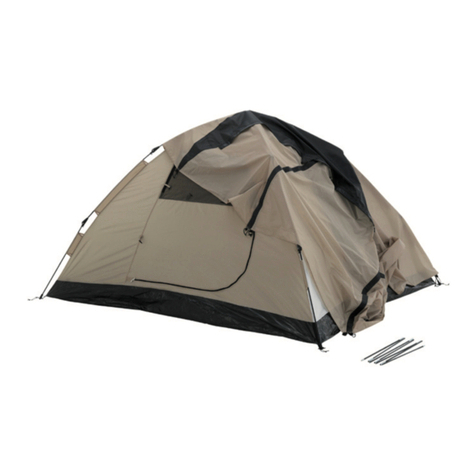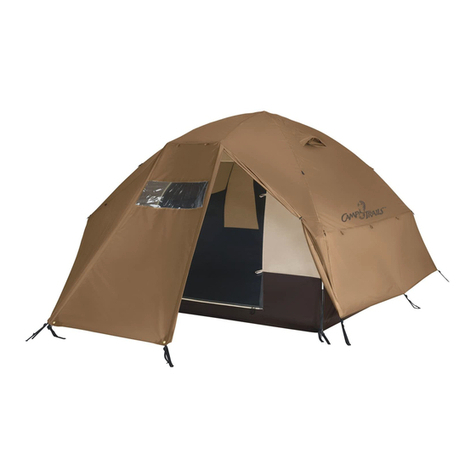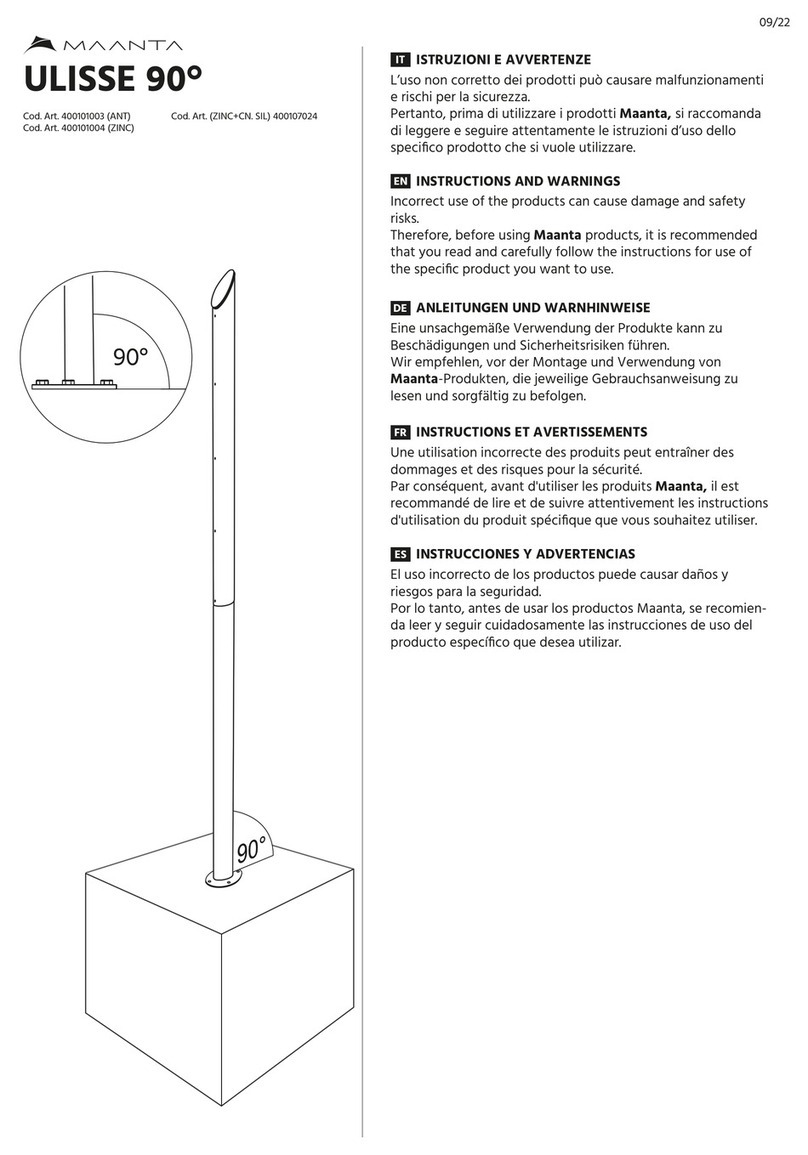
Step # 6: Attach the Guylines
Tie the guylines to each cotton loop provided on the weather skirt (at the bottom seam of the
tent eave). This only needs to be done the first time you set up your tent as guylines can be
packed in with the tent with some inspection as necessary throughout the life of the tent.
Step # 7: Insert all remaining pegs
Zip the front door closed before staking. After inserting remaining pins to the groundsheet
grommets, stake the Jpegs through elastic cords that are pre-attached to the canvas loops on
the outside of the canvas tent’s rain flap at the base of the walls. Drive a jpeg through one of
the loops/elastic cords provided, then stake down the other on the far side from the first one.
Proceed in a star pattern, crossing to the far side of the tent each time until you have staked
the whole tent down or work methodically in either a clockwise or anti-clockwise direction,
being sure not to miss any.
Then, stake out the guylines attached to the weather skirt (at the bottom seam of the tent
eave) with remaining Jpegs. Don’t push the stake pegs or pins all the way into the ground or
else you won’t be able to adjust the tension on the guylines later.
The tent should be taut, but avoid over tightening the tent. Make sure to check that the storm
flap (the canvas cover that rests over the groundsheet to protect the zippers) is positioned
downward, to protect the rain water seeping inside the tent.
Insert all the Jpegs around the whole tent without putting any of them under too much tension.
Don’t push the stake pegs all the way into the ground or else you won’t be able to adjust the
tension on the guylines later. Now you can push in the pegs at the base of the walls (no need
to worry if they don’t go all the way into the ground. These peg loops serve mainly to keep
the storm flap in place protecting the zip of the groundsheet). By doing so, any remaining
slack in the canvas will disperse, giving your canvas tent a good shape.
Step # 8: Adjust the Guylines and Metal Tension Adjusters
When all the pegs and pins are in, tighten the guylines to create the desired tension. Make
sure to start with top of the A-frame entrance pole first by attaching a long guyline to stake it
down, then right and left side of the canvas tent. Once the first three guy lines are in place at
the front, go to the back of your canvas tent and repeat with the opposite three guy lines at
the back. Repeat this process until all of the remaining guy lines are in position, always
following the line of the seams at all times.




























